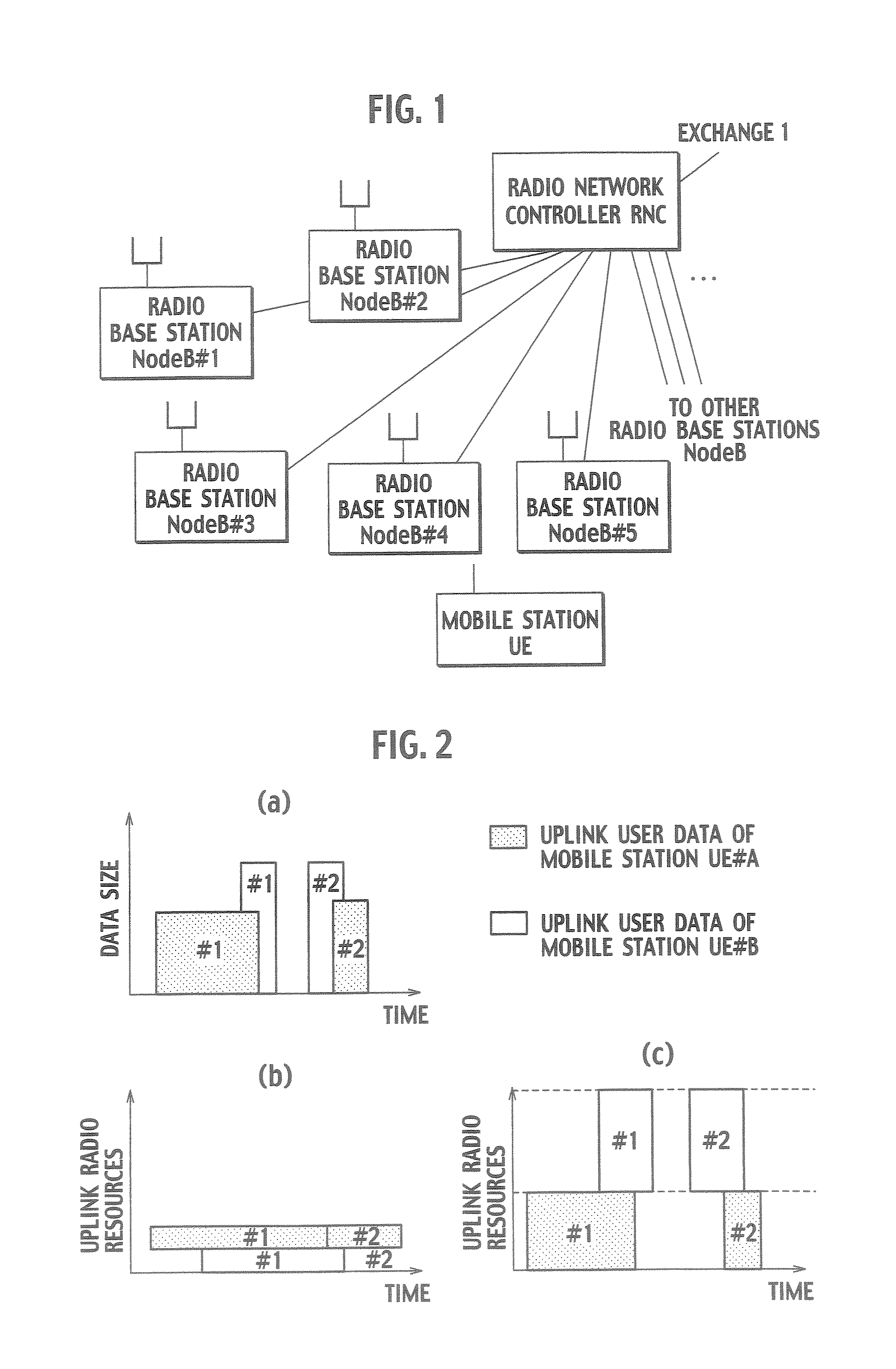Transfer Rate Control Method, Transmission Power Control Method, Transmission Power Ratio Control Method, Mobile Communication System, Mobile Station, And Radio Base Station
- Summary
- Abstract
- Description
- Claims
- Application Information
AI Technical Summary
Benefits of technology
Problems solved by technology
Method used
Image
Examples
first embodiment
A Configuration of a Mobile Communications System According to the Present Invention
[0091] Descriptions will be provided for a configuration of a mobile communications system according to a first embodiment present invention by referring to FIGS. 6 to 25. The mobile communications system according to this embodiment is designed for the purpose of improving communication performance such as channel capacity and communication quality. In addition the mobile communications system according to this embodiment can be applied to the “W-CDMA” and the “CDMA2000” which are the third generation mobile communications systems.
[0092] As shown in FIG. 6, the mobile communications system according to this embodiment is configured of an exchange 1, a radio network controller RNC, a radio base station NodeB and mobile stations UE. The mobile stations UE#1 to UE#3 shown in FIG. 6 transmit and receive user data to be transmitted by use of their respective dedicated physical channels #1 to #3 which ha...
second embodiment
the Present Invention
[0215] A mobile communications system according to a second embodiment of the present invention is the same as the mobile communications system according to the first embodiment except that, as shown in FIGS. 28 to 30, the transmission power of uplink user data is controlled instead of the transmission rate of the uplink user data.
[0216] In the case of this embodiment, as shown in FIG. 28, the E-TFC selector unit 134b in the MAC-e function unit 13c is configured to define a “transmission power level” of each mobile station UE instead of the “rate level” as shown in FIG. 14, and to classify the mobile station UE according to the transmission power level thus defined.
[0217] The transmission power of this case may be a total sum of transmission powers respectively of all the dedicated physical channels of a mobile station UE, or may be transmission power of a channel (E-DPDCH) for the mobile station UE to transmit uplink user data.
[0218] It should be noted that,...
third embodiment
the Present Invention
[0220] A mobile communications system according to a third embodiment of the present invention is the same as the mobile communications system according to the first embodiment except that, as shown in FIGS. 31 to 33, the transmission power ratio of uplink user data is controlled instead of the transmission rate of the uplink user data.
[0221] In this respect, the transmission power ratio of the uplink user data is a ratio of a transmission power of an enhanced dedicated physical data channel (F-DPDCH) of the uplink user data to a transmission power of a dedicated physical data channel (DPCCH) of the uplink user data.
[0222] In this embodiment, as shown in FIG. 31, the E-TFC selector unit 134b in the MAC-e function unit 13c is configured to define the “transmission power ratio level” of each mobile station UE, instead of the “rate level” as shown in FIG. 14, and to classify the mobile stations UE according to the transmission power ratio level thus defined.
PUM
 Login to View More
Login to View More Abstract
Description
Claims
Application Information
 Login to View More
Login to View More - R&D
- Intellectual Property
- Life Sciences
- Materials
- Tech Scout
- Unparalleled Data Quality
- Higher Quality Content
- 60% Fewer Hallucinations
Browse by: Latest US Patents, China's latest patents, Technical Efficacy Thesaurus, Application Domain, Technology Topic, Popular Technical Reports.
© 2025 PatSnap. All rights reserved.Legal|Privacy policy|Modern Slavery Act Transparency Statement|Sitemap|About US| Contact US: help@patsnap.com



